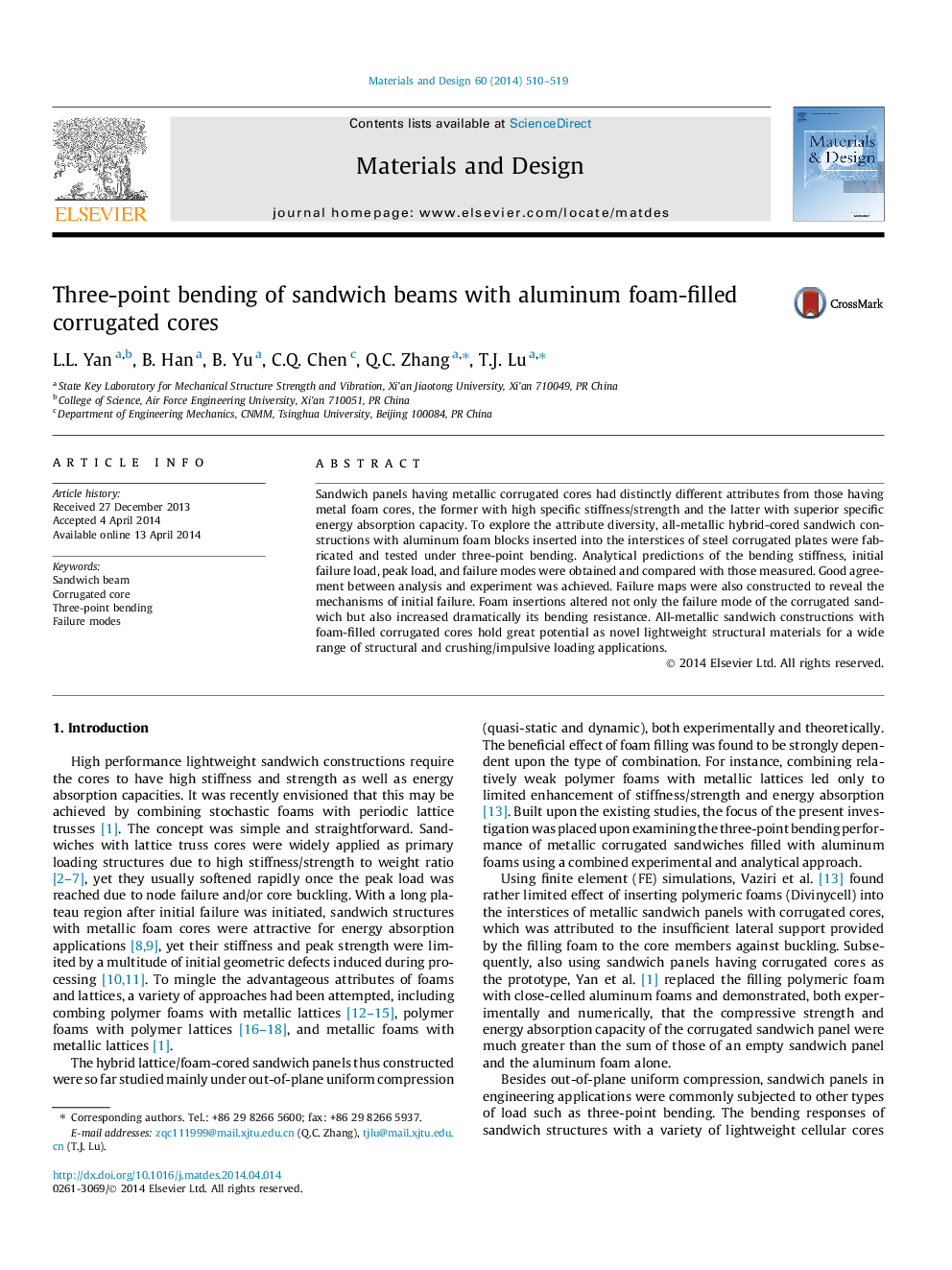| Article ID | Journal | Published Year | Pages | File Type |
|---|---|---|---|---|
| 829221 | Materials & Design (1980-2015) | 2014 | 10 Pages |
•Metallic sandwich beams with empty and aluminum foam filled corrugated cores.•Quasi-static three-point bending tests were carried on the sandwich beams.•Aluminum foam filling led to dramatically increased bending resistance performance.•Bending stiffness, initial failure load, peak load, and failure modes were predicted.•Failure maps were constructed to reveal the failure mechanisms.
Sandwich panels having metallic corrugated cores had distinctly different attributes from those having metal foam cores, the former with high specific stiffness/strength and the latter with superior specific energy absorption capacity. To explore the attribute diversity, all-metallic hybrid-cored sandwich constructions with aluminum foam blocks inserted into the interstices of steel corrugated plates were fabricated and tested under three-point bending. Analytical predictions of the bending stiffness, initial failure load, peak load, and failure modes were obtained and compared with those measured. Good agreement between analysis and experiment was achieved. Failure maps were also constructed to reveal the mechanisms of initial failure. Foam insertions altered not only the failure mode of the corrugated sandwich but also increased dramatically its bending resistance. All-metallic sandwich constructions with foam-filled corrugated cores hold great potential as novel lightweight structural materials for a wide range of structural and crushing/impulsive loading applications.
